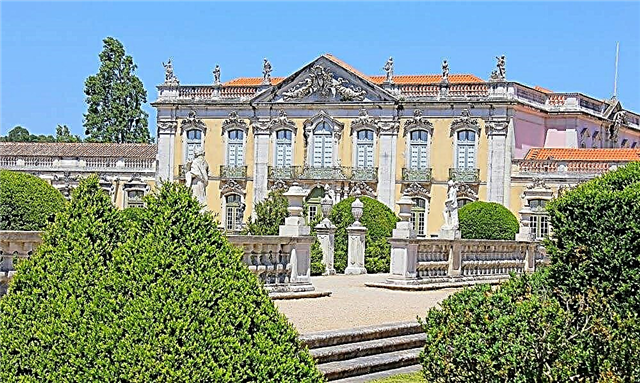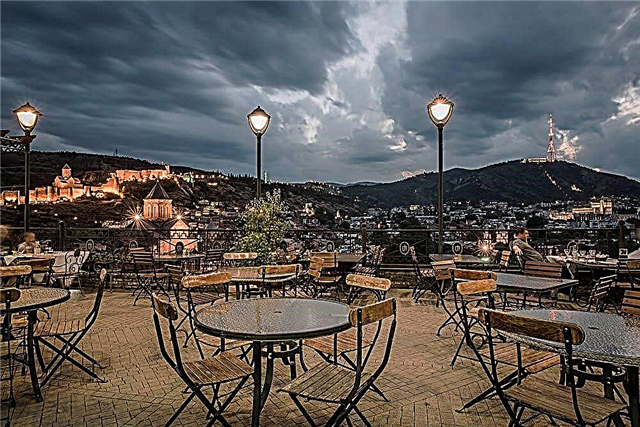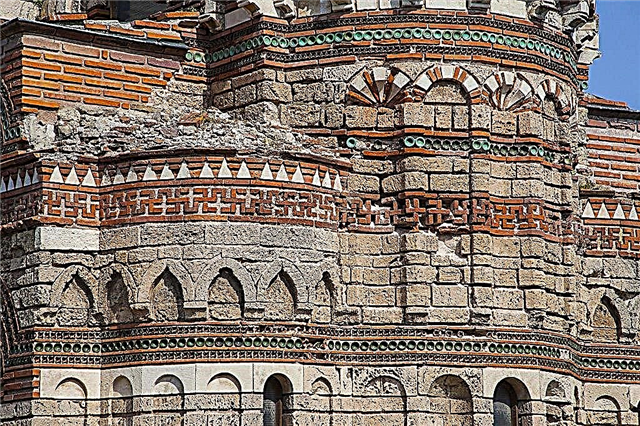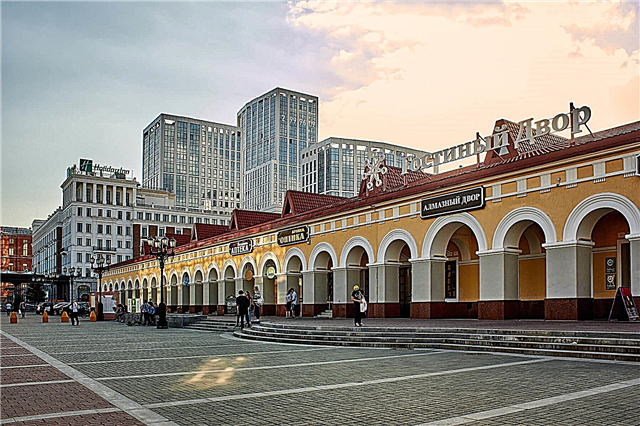The architectural appearance of medieval castles in Italy, more reminiscent of impregnable fortresses, reflected not only the romance of love intrigues, but also the tragedy of bloody battles, numerous wars and disputes over inheritance. Many of the castles were built to defend against enemy attacks and uprisings of disgruntled peasants. Only after a while the fortresses settled down, perked up and became the embodiment of the greatness and rich cultural heritage of Italy. Today, some of the castles have turned into museums, some are given to city municipalities, some are still privately owned. But the most important thing is that they have survived and are ready to tell colorful stories from their rich past.
The most interesting castles in Italy
The best medieval fortresses, photos with names and descriptions.
Castel Sant'Angelo
This ancient Roman castle with a statue of an angel on the roof over the long history of its existence had to go through many events. It was built by the emperor Hadrian at the beginning of the 2nd century as his own tomb; years later, other monarchs were buried in it. Then the mausoleum was a military fortress, a papal residence and keeper of Catholic treasures, a prison for prisoners of the Inquisition, among whom were Galileo and Giordano Bruno. Today it houses a museum.

Castel Nuovo
The grandiose structure in Naples, erected in the 13th century during the time of Charles of Anjou, was given the name of the New Castle in order to avoid associations with the earlier built Castel del Ovo. The palace with luxurious interiors served as the residence of the Angevin kings. Outside, it is a powerful trapezoidal structure with five cylindrical towers, between two of them there is a triumphal arch with statues and bas-reliefs. Now a museum is open in the castle.

Castel del Monte
The castle on a mountain in the Italian region of Apulia was built under Frederick II in the middle of the 13th century. Many legends are associated with it and it is still unknown why it was built. One of the versions is for practicing occultism. Its entire layout is based on the number 8 - the structure has an octagonal shape, 8 towers of the same shape, 8 halls each on the first and second floors of the castle, an octagonal reservoir in the courtyard, and more. Today the castle is open to visitors.

Aragonese castle
The famous landmark of the Italian island of Ischia is located on a pedestal of volcanic lava rising from the sea. The castle and observation towers next to it were built in 474 BC. The ancient structure is connected with the coast of Ischia by a dam and a 15th century bridge. At different times there were churches, a monastery, a seminary, a military garrison, and a prison. Today the castle is privately owned and open to visitors.

Fort Bard
Fort Bard acquired its architectural appearance, which we observe today, in the 30s of the last century. In general, the history of the fortified complex, located in the Valle d'Aosta, has about 15 centuries. All this time, it was used to control the historical route between Italy and France, performing defensive and protective functions. In the 2000s, a museum of the Alps was opened here, and art exhibitions are held.

Sforza castle
Built in the 14th century in Milan, the castle initially served as a defensive function, however, a century later, it was reconstructed by the Duke of Sforza and turned into his residence. At the same time, cozy inner courtyards, a beautiful square, luxurious interiors appeared, which can be observed today. Several museums are open in the palace - dishes, musical instruments, furniture. The main attraction is an art gallery with works by famous artists.

Estense
A massive defensive structure with towers, surrounded by a moat, was built in the city of Ferrara at the end of the 14th century. But over time, the owners - the ruling dynasty d'Este - began to equip it, lavishly decorate it and turned it into their residence. Once upon a time in the dungeons of the castle there was a famous prison, where noble persons were held guilty before the d'Este family. Today, the castle houses the city administration, and some of the premises are open to visitors.

Miramare
The magnificent snow-white castle on the shores of the Gulf of Trieste was built in the middle of the 19th century for the Archduke Maximilian, the future Mexican emperor, and his wife Charlotte. Today the castle is open to the public.Its numerous rooms have preserved the luxurious interior of the 19th century, furniture, paintings, jewelry, household items. The castle is adjoined by a marina and a picturesque park with exotic trees and shrubs, variegated Mediterranean flowers.

Sant elmo
From the walls of the castle, located on the highest peak of Naples - the Vomero hill - the whole city is visible at a glance. The castle was built in the XIV century on the site of a small church. In the 16th century, after an earthquake, it was reconstructed and given the appearance of a six-pointed star. For several centuries, a military prison was located within its walls. Now it houses a museum with famous works of Italian artists, as well as an art history library.

Castel del Ovo
The famous “Castle of the Egg” stands on a small island connected by a bridge to the mainland of Naples. Its name is associated with the legend according to which the poet Virgil hid an egg in this place, and until it breaks, everything will be calm in Naples and the surrounding area. The castle acquired its present appearance in the 12th century under Roger of Sicily, becoming his residence. Later, the building was fortified and used for military purposes. Today a museum is open here, exhibitions and concerts are held.

Buonconsillo
From the 13th to the beginning of the 19th century, the castle in the city of Trento was the seat of bishops. Then it housed military barracks, a prison, in the XX century it was restored, and now there is a museum there. Over the course of several centuries, the territory of the castle expanded, new buildings appeared. The result is a whole complex of buildings of different styles and eras, surrounded by impregnable walls. The special value of the castle is the unique precious frescoes in the Gothic style.

Rocca Kalashio
The tallest building in Italy began to be erected in the Apennine mountains in the 10th century. From the walls of the ancient fortress, all the surrounding environs were clearly visible, troops were stationed in it. Unfortunately, as a result of several strong earthquakes in the 15th-18th centuries, the fortress walls turned into ruins, only the towers survived. Nowadays, the building has been partially restored; this place is popular with tourists and filmmakers.

Castelvecchio
The castle in Verona was erected as a fortification during the Scaliger era, in the XIV century. On its territory are the royal palace, the armory and between them - the courtyard. From the bastion, across the Adige River, stretches the Scaliger Bridge made of red brick with battlements repeating the shape of the castle walls. In the last century, a museum of painting and sculpture of the Middle Ages was organized here.

Orsini-Odescalchi
The medieval castle - the main attraction of the city of Bracciano - was named after its owners. The powerful feudal Orsini family began building the castle in the 15th century and within a couple of centuries turned it into one of the most fortified bastions in Europe. And in the 17th century, the castle was sold to representatives of the princely family of Odescalchi, his descendants still own the building. The castle has preserved weapons, furniture, works of art, medieval wall paintings.
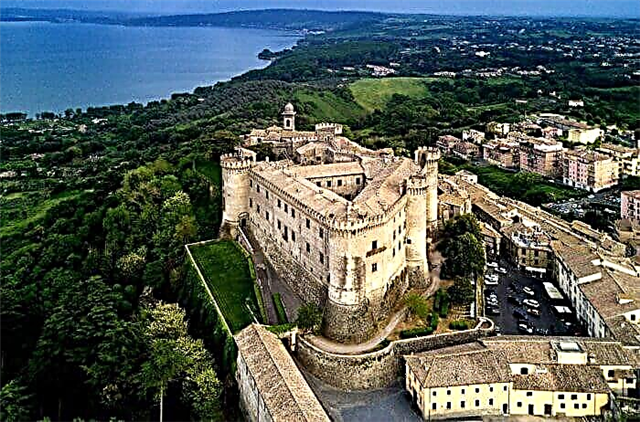
Torrechiara
The mighty castle on a hill, 20 km from Parma, was built in the 15th century by a hereditary aristocrat, Count Rossi, for his beloved Bianca.The castle combines an unapproachable appearance, which includes a triple wall enclosure, four corner towers that perform defensive functions, and luxurious interior decoration. The painted walls and vaults of the Hall of Angels, the Golden Room, and the Hall of Victories evoke immense admiration.

Fenis
The castle with numerous towers acquired its present appearance in the 16th century. Although the first mention of a fortification in the mountainous region of Valle d'Aosta dates back to the 13th century. Despite its inaccessible appearance, the castle did not have to participate in battles and long sieges, so it has been preserved in excellent condition. Its particular value is the 15th century frescoes in the courtyard. One of the towers of the palace is called Pigeons, and pigeons live in it, as in the Middle Ages.

Scaliger Castle in Malcesine
Towering over Lake Garda, the castle is named after the aristocratic family of the rulers of Verona, although the Scaligers owned it only until 1387. But it was they who, in the 13th century, turned the building into an impregnable fortress, and all the main architectural details of that time have survived to this day, including the battlements of the towers and walls in the form of a swallow's tail. Today there is a historical museum, wedding celebrations are held, concerts are held in the palace amphitheater.

Fenestrelle
The Fenestrelle Fortress in the Piedmont Valley is a complex of numerous forts, earthen fortifications and ramparts, and defensive walls 5 km long. The history of this outstanding fortification dates back more than 3 centuries, but it has never been used for its intended purpose. Until the middle of the last century, the fortress served as a prison, then it was restored and turned into a museum complex.

Rocca Albornocyana
The fortress castle, located on the hill of St. Elijah, surrounded by picturesque landscapes, rises above the city of Spoleto. The fortress was erected in the XIV century on the site of the ancient citadel of the Duchy of Spolet. It is a rectangular structure with powerful walls and six quadrangular towers, inside there are the Armory and the Honor courtyard. For a long time, a prison was located on the territory of the fortress; today there are museum expositions here.

Fosdinovo (Malaspina)
The first defensive structure in the city of Fosdinovo was mentioned in the 2nd century. The current fortress was built in the XII century, and from the beginning of the XIV century to the present day it has been in the possession of the Malaspina family. The castle has the shape of a quadrangle with round towers at the corners; inside there is a living room, a dining room, a throne room, a prison, and a torture chamber. Today, a museum is open here, frescoes, wall paintings, Dante's room, collections of coins and weapons are of particular value.
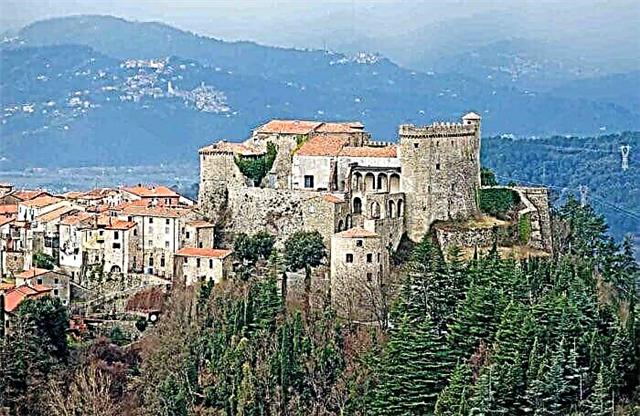
Rocca Imperiale
This is the common name for an Italian city on the Ionian coast and an ancient castle located at the very top of the cliff. It was built in 1225 by the Roman emperor Frederick II. The place was not chosen by chance; the mountain offers an excellent panoramic view of the Gulf of Taranto. At present, separate fragments of the surrounding walls, dilapidated bastions and bridges have survived from the castle. Restoration works are being carried out there under the auspices of UNESCO.

Fort Diamante in Liguria
The fortified defensive structure of the 18th century got its name from the Monte Diamante mountain, on the top of which it is located, at an altitude of 670 meters above sea level. The fortress served as a powerful defensive bastion for Genoa against invasions from the north. From its terraces, the entire city, stretching along the sea coast, and its surroundings are clearly visible. The defensive system of Genoa has a number of well-preserved fortifications to this day.

Bardi Castle
An impregnable fortress with solid sloping walls rises on a red jasper cliff 60 km from Parma. It all started with the construction of the main stone tower at the end of the 9th century. Then, over the course of several centuries, other structures were erected around it - barracks, a chapel, living quarters, a torture room, etc. From the 16th century, the fortress ceased to function as a military structure and turned into a noble mansion. Today it is an architectural monument open to tourists.

Bezeno
Situated on a hill, the fortified complex in the Trentino area is strategically positioned to control the surrounding area and access roads. The fortress was first mentioned in the 12th century. Bezeno is a whole city with a main square, palaces, parade halls, cellars for food supplies, and a rainwater collection system. Today, the castle hosts festivals, historical reconstructions, displays of armor and weapons.

Trani castle
A powerful fortress with thick walls, a moat and square towers in austere Gothic style was built in the small town of Trani in southern Italy in the 13th century. Three centuries later, under Emperor Charles V, the castle was reconstructed, further fortified, and guns appeared on its towers. From the 19th century to the middle of the 20th century, the building served as the main city prison. Nowadays it is open to tourists and hosts various cultural events.

Fortress Brisighella
One of the main attractions of the city of Brisigella in northern Italy. It began to be erected in the 14th century on the top of a hill to control the valley below and the access roads. Two centuries later, the fortress was captured by the Venetians, and then it became part of the Papal State. It was expanded, new walls and a large Venetian tower appeared. In this form, it can be observed today. Inside there is an exposition on the history of the fortress.

Castello di Brolio
One of the most ancient castles in Tuscany dates back to the 9th century. And from the 11th century to the present day, the palace and the surrounding grounds belong to the famous aristocratic Ricasoli family. For centuries, the estate's main income has come from vineyards and olive trees. Today Castello di Brolio is one of the best producers of classic Chianti wine. There is a shop right in the castle wall where you can taste this wine.

Castello di Grinzane Cavour
Grinzane Cavour is the center of winemaking, and in the castle of the same name, built on a hill among fields and vineyards, is the headquarters of wine producers. Some of the buildings date back to the 13th century; later, the castle was reconstructed many times. Its current appearance is simple and harmonious, it resembles a country mansion, although it once looked like a formidable citadel. Today it houses a museum, an enoteca, a restaurant, a hall of Masks, where gastronomic events are held.

Valentino castle
The castle is located in the heart of the city of Turin, in the parkland of Valentino, on the banks of the Po River. The 13th century is considered to be the beginning of its construction. From above, it looks like a horseshoe - a symbol of good luck, and the locals believe that it was luck that helped the castle survive the numerous military conflicts. The castle changed owners several times, was rebuilt, and as a result, different architectural styles were closely intertwined in it, which gives it a special charm. The castle courtyard is lined with marble mosaics.

Monteriggioni
The medieval fortress on top of a hill in the province of Siena was built at the beginning of the 13th century to guard the borders in the war against the eternal rival of Florence. To this day, the outer defensive walls with a length of 570 meters, 14 towers, all the internal buildings of this ancient city have remained practically unchanged. At the beginning of July, an annual festival of the Middle Ages is held here, allowing you to feel the spirit of the era of brave knights.





